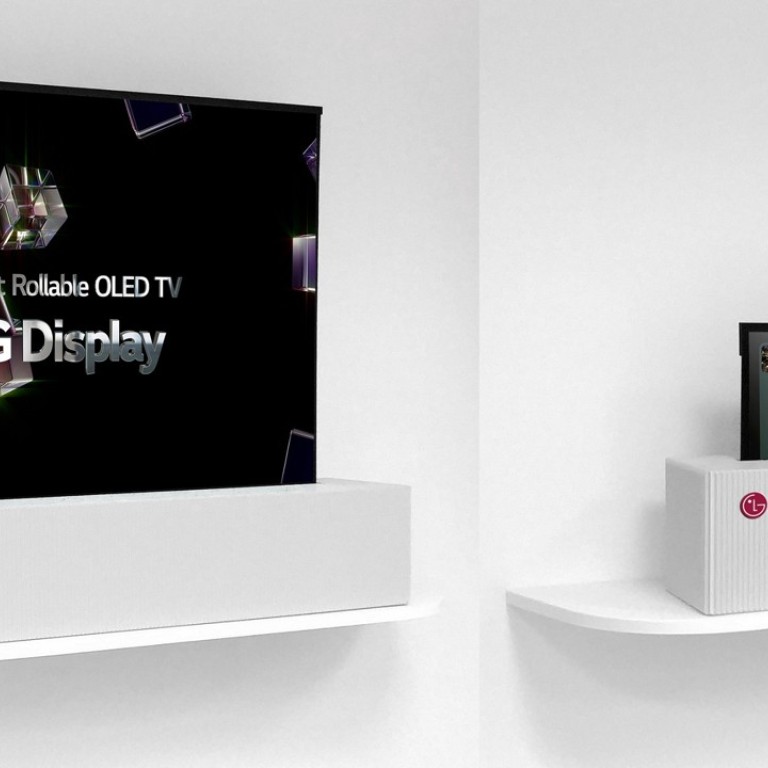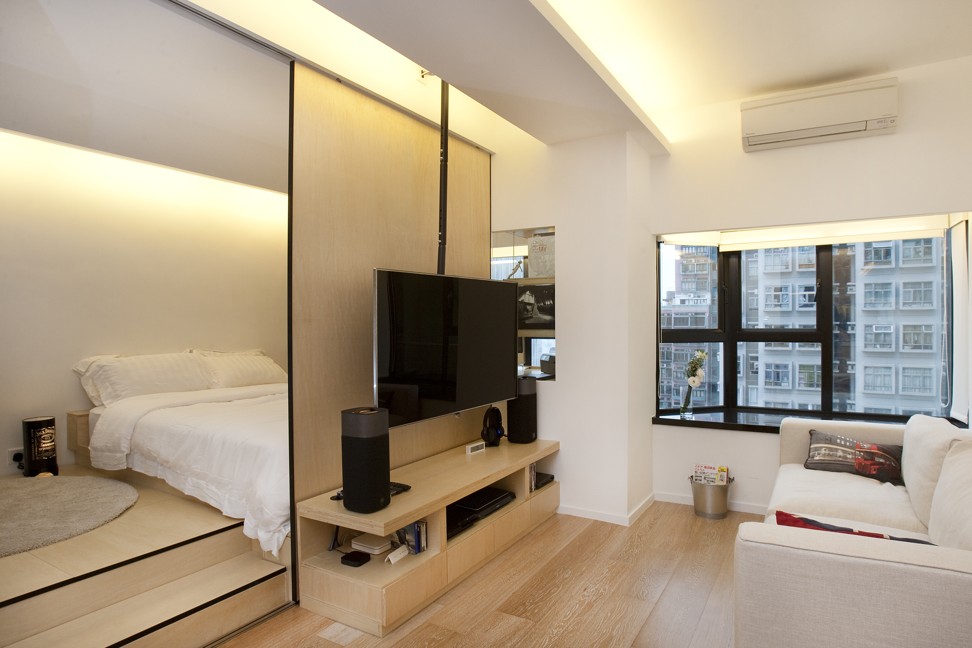
How to hide your TV – get screens that blend into the decor behind, or disguise themselves as artwork or a family photo when not in use
LG is close to launching a foldable TV screen, Samsung has models that blend in, chameleon-like, with your wall or look like artworks when not in use, and designers working on Hong Kong’s ever smaller flats have novel solutions too
Now you see it; now you don’t. That’s an ideal scenario for those with a large-screen TV, but who don’t want it to dominate their living space. A set that disappears when not in use could be the answer.
LG has been working for a while on a flexible TV that rolls up like a newspaper and can be tucked away in its own little box. The latest prototype of this innovation, unveiled at consumer electronics trade show CES 2018 in Las Vegas, is a paper-thin, 65-inch OLED (organic light emitting diode display) screen – although launch date and pricing have not been revealed.
Stay tuned: next generation smart TVs will keep the world watching
While Samsung’s TVs are getting bigger, the brand is also designing for “today’s consumer who is mindful of the aesthetics of their space”. In March 2018 in New York, the company unveiled another addition to its barely there TV stable, called Ambient Mode, following last year’s launch of The Frame.
For home entertainment, the new quantum-dot QLED TV gives a visual display designed for total immersion. Switched off, it becomes an information screen for news, weather and traffic updates, which can also play music. Chameleon-like, the set can blend into the interior decor by mimicking the colours and patterns of the walls around it – a feat achieved via the corresponding Samsung SmartThings app.
Doing away with a screen altogether, Sony has announced a new home projector that projects images directly onto a wall, the workings concealed in a small, faux-marble-topped credenza intended to look like a piece of furniture.
Yves Behar, designer of Samsung’s The Frame – a TV launched last year that is meant to look like an artwork – says that, especially in smaller homes and apartments, people don’t want a black square taking up space when it’s not in use.

Sitting flat against the wall, with no cables or fastenings in sight, The Frame is designed to “disappear into the decor”, said Behar, founder of US-based studio Fuseproject.
“With the Samsung engineering team, we were able to hide these elements and make the beautiful materials and composition of The Frame the main attraction,” he says. “Once we decided to literally frame the display as a piece of art, we figured out how to mount it flat against the wall, just like a framed piece of art would be.”
The complete guide to buying a TV – flat or curved, HDR or 4K, for streaming films or gaming, or just for its looks
The brand has collaborated with artists and partners, including Sotheby’s, enabling users to bring pieces into their homes at a fraction of the purchase price. In Hong Kong, where Lane Crawford is exclusive stockist of The Frame, subscribers to Samsung Collection can choose from more than 100 works of art, specially designed for the TV, by renowned global artists in categories including wildlife, landscapes, drawings, digital art and still life. Or they can highlight their own creations or family photos.
Hong Kong artist and new-media designer Victor Wong is represented with his collection Dunhuang Flying, a series of animated images commissioned by Samsung to celebrate the 2018 Chinese New Year, as well as The Wave – Black Mountain White Water, an LED installation art crossover.

The displayed artworks are naturally dimmed and brightened throughout the day, according to the changing light. “The user experience is meant to emulate a digital art space, so we designed it to be simple and beautiful just like a gallery, with the artworks themselves as the primary visual focus,” Behar said.
LG Display disregards Samsung’s TV comparison
For now, there are ways to make the TV seem like it disappears. Designer Clifton Leung, of Clifton Leung Design Workshop in Hong Kong, has several solutions for those who don’t want a TV cluttering their precious space.
For a client in Sai Ying Pun, a fast-gentrifying neighbourhood on Hong Kong Island, the conversion of a small one-bedroom flat into a studio apartment required downplaying the screen’s presence in the newly open-plan space.
With the internal walls removed, Leung suspended the TV on a pole, which can twist to face either the sofa or bed, or be hidden from sight from the sleeping area via a sliding room divider. “It’s just a different way of dealing with the TV to make it more interesting,” he said.

Similarly, in another Mid-Levels apartment, the clients didn’t want the set visible when it wasn’t on in their living room. There, Leung employed the same sliding door technique, this time as part of a display cabinet.

